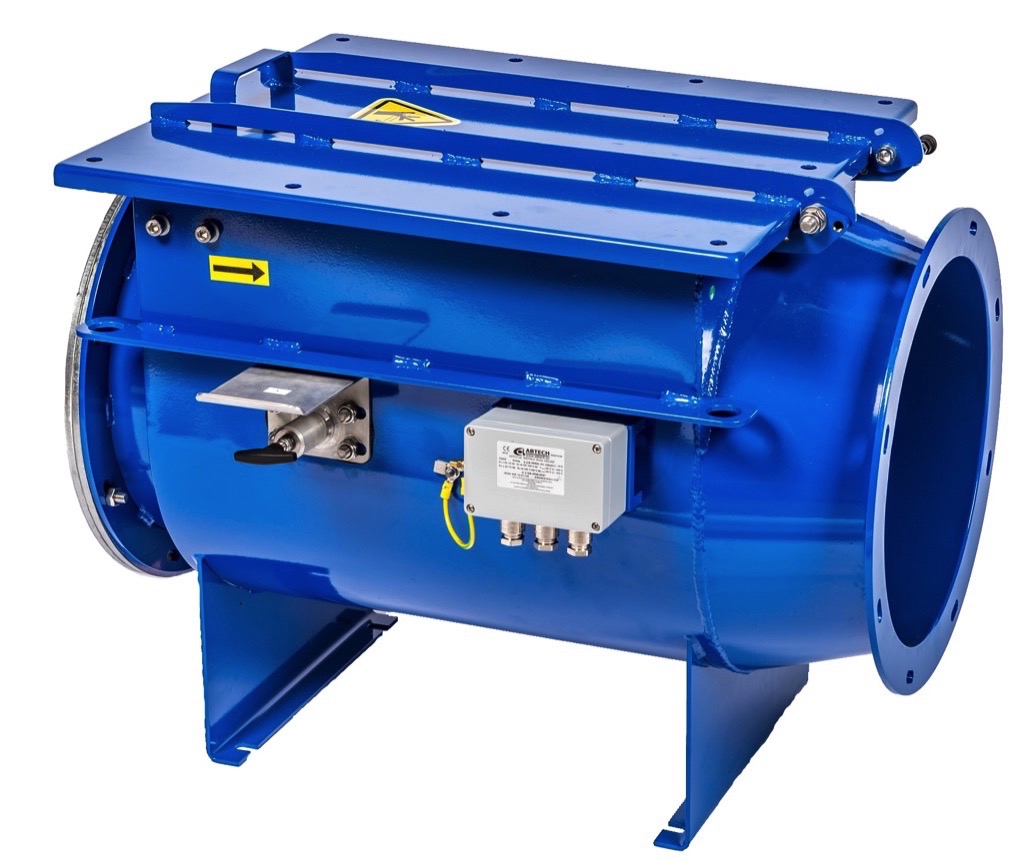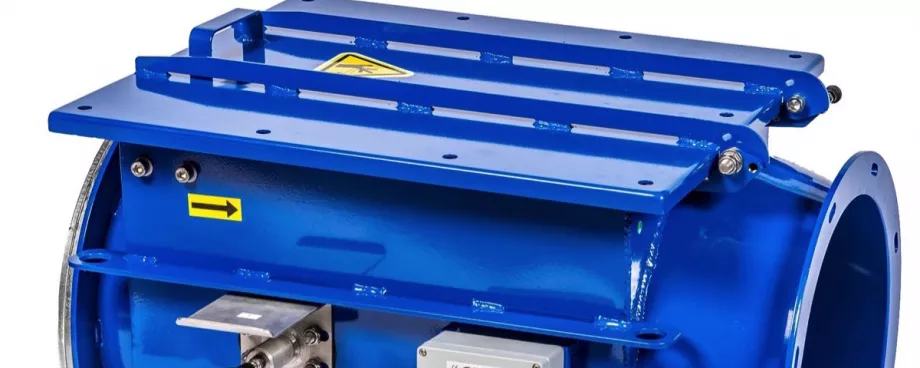
Explosion isolation valves are typically required where two or more process vessels are linked by ductwork and an explosion hazard exists. An isolation flap valve installed in the duct is closed rapidly by the pressure wave from the downstream explosion ahead of the flame front arrival. By stopping the flame from reaching the upstream vessel, it prevents the flame and explosion pressure from reaching attached vessels and creating a secondary, and often more energetic explosion.The IFV flap valve is compliant to the ATEX Directive and certified by a third party as a dust explosion protection system. The IFV-M model adds integrated monitoring of the flap position and dust accumulation in the valve body, meeting the requirements of the OSHA Combustible Dust Directive, NFPA 654, and NFPA 69.

Both models feature a durable carbon steel body and a stainless steel flap. In normal operation, process airflow holds the lightweight flap open with minimal pressure drop. The cylindrical housing design minimizes the risk of product buildup, while the blade axle is mounted entirely within the housing to ensure leak-tightness. A hinged inspection cover provides easy access, supported by a gas spring for valve diameters of DN630 and above. IEP Technologies isolation flap valves are available in sizes from DN100 to DN710 for dust class ST1 (KST ≤200 bar m/s) for reduced explosion pressures (Pred) up to 1 bar. For ST2 dusts (KST ≤300 bar m/s) they are available in sizes up to DN200. ■







